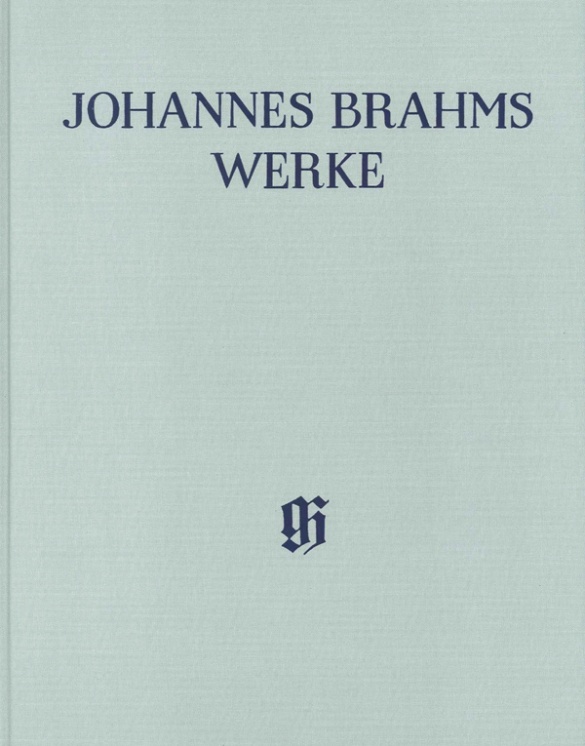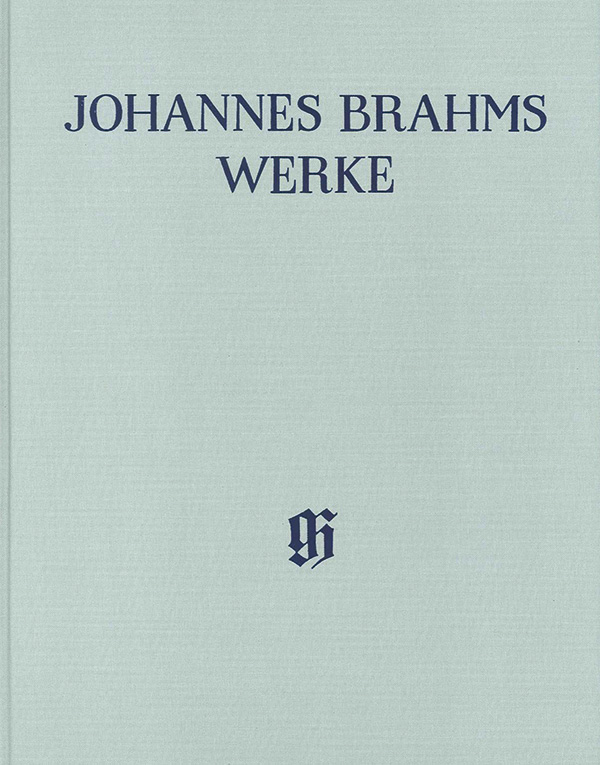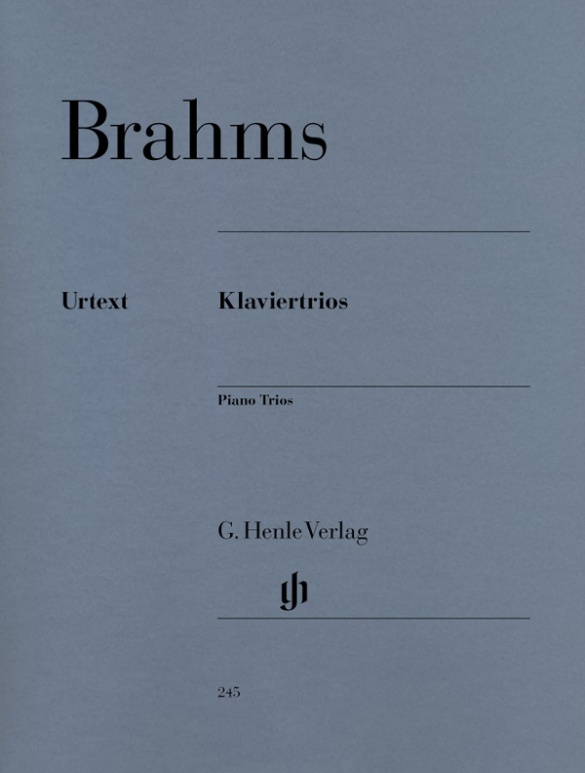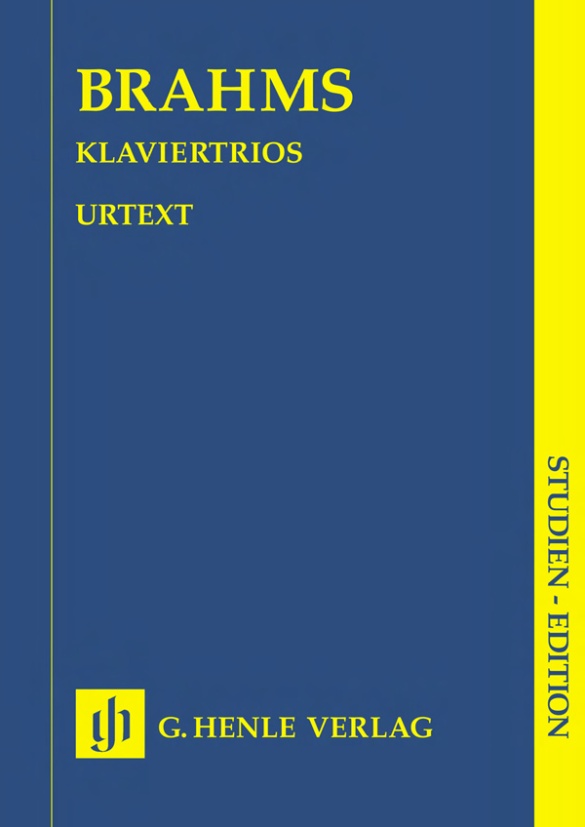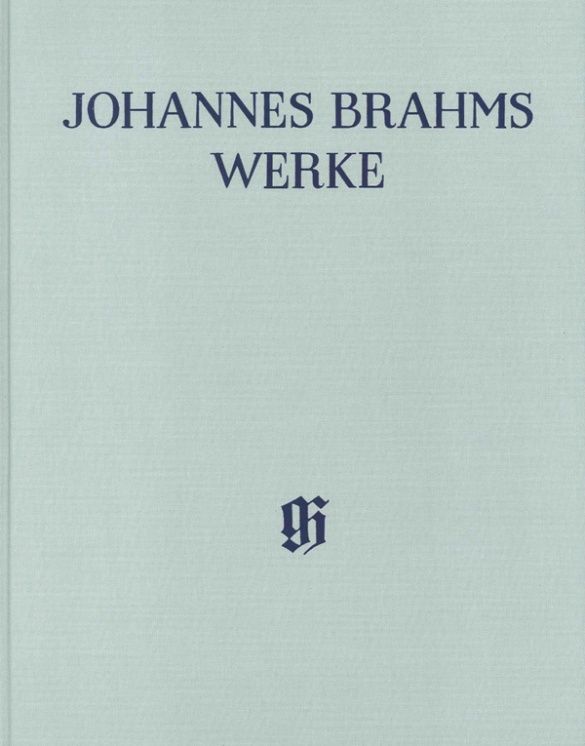Johannes Brahms
Ser. 1, Vol. 10 | Concerto en la mineur op. 102 pour violon, violoncelle et orchestre
CONTENU/DÉTAILS
CONCERNANT LE COMPOSITEUR
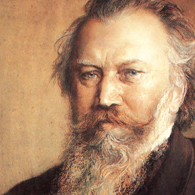
Johannes Brahms
Son œuvre considérable comprend de la musique de chambre, des œuvres pour piano, de nombreuses compositions pour chœur et des lieder (parmi lesquels des compositions sur des textes de chants populaires) ainsi que les grandes pages orchestrales des années 1870 et 80. Ses compositions sont marquées par le procédé de la variation à développement. Il passe à la fois pour avoir été aux antipodes de la Nouvelle École allemande animée par Liszt et le représentant de la «musique absolue».
| 1833 | Né le 7 mai à Hambourg en tant que fils d’un musicien. À l’âge de 7 ans il prend ses premières leçons de piano chez Willibald Cossel, puis chez Eduard Marxen. Premières auditions publiques à partir de 1843. |
| 1853 | Lors d’une tournée de concerts dans les villes allemandes, il fait la connaissance de Schumann qui, dans son article «Neue Bahnen» (Nouvelles voies) l’annonce comme le grand compositeur à venir. Il noue avec Clara Schumann une profonde amitié qui tiendra toute sa vie. |
| 1854–57 | 1er Concerto pour piano en Ré mineur op. 15. |
| 1857–59 | Chef de chœur, pianiste et enseignant à la cour princière de Detmold. |
| 1859–61 | Direction du chœur de femmes de Hambourg. |
| 1860 | Manifeste contre les «Nouveaux Allemands» autour de Liszt. |
| 1863 | Cantate «Rinaldo» op. 50. |
| 1863 | Directeur de l’Académie de chant de Vienne. |
| 1868 | Exécution partielle du «Requiem allemand» op. 45 à Vienne (création de l’œuvre intégrale en 1869 à Leipzig). |
| 1871–74 | Directeur artistique de la Société des Amis de la Musique à Vienne. |
| 1873 | Variations sur un thème de Haydn op. 56a pour orchestre. |
| à partir de 1877 | Son œuvre symphonique débute par la 1re Symphonie en Ut mineur op. 68 (commencée en 1862), composition de la 2e Symphonie en Ré majeur op. 73 (1877), 3e Symphonie en Fa majeur op. 90 (1883), 4e Symphonie en Mi mineur op. 98 (1884-1885): thèmes expressifs, style de type musique de chambre. |
| à partir de 1878 | Voyages en Italie. |
| 1878 | Concerto pour violon en Ré majeur op. 77 pour Joseph Joachim. |
| 1881 | 2e Concerto pour piano en Si bémol majeur op. 83 avec Scherzo. |
| 1886 | Président d’honneur du Tonkünstlerverein de Vienne. |
| 1897 | Vier ernste Gesänge (Quatre chants sérieux) op. 121. Meurt le 3 avril à Vienne. |
About the Authors
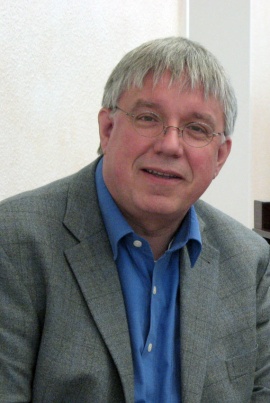
Michael Struck (Editeur)
Dr. Michael Struck, born in 1952 in Hannover, studied school music, private music teaching, piano (diploma, class of Werner Schröter), musicology (Constantin Floros) and pedagogy at the music conservatory in Hamburg and at Hamburg University. In 1984 he completed his doctorate with a thesis on Schumann’s controversial late instrumental works.
He is a research associate at the research centre the new “Johannes Brahms Complete Edition” at Kiel University (member of the editorial board), as well as editor and supervisor of numerous volumes. He is the author of many musicological publications on music of the 18th to 20th centuries and other work editions. Struck is also a music critic. As a pianist he has given concerts with the vocal ensemble of Kiel University as well as with the Wiesbaden Chamber Choir and has given concert lectures (in 1989, 1997, 2001, 2005 as part of the matinees on “Raritäten der Klaviermusik” in Husum). In 2009 he was awarded the Schumann Prize of the City of Zwickau, in 2010 as a scholar at the Brahms Research Centre at the Musikwissenschaftliches Institut of Kiel University he was a co-prizewinner of the Brahms Prize 2010, conferred by the Brahms-Gesellschaft Schleswig-Holstein.
Informations sur la sécurité du produit

G. Henle Verlag
Vous trouverez ici des informations sur le fabricant du produit.G. Henle Verlag e.K.
Forstenrieder Allee 122
81476 München
Allemagne
info@henle.de
www.henle.com
Without question, the new edition of the "Double Concerto" represents a major achievement in Brahms studies. In addition to delivering as clean a rendering of the text of the work as one might wish for, Struck has assembled, synthesized, and critically evaluated an incredible amount of new material in his introductory essay and critical report. All of this should be of great interest to Brahms devotees whether they happen to be scholars, students, performers, or simply lovers of his music. Needless to say, these constituencies are not mutually exclusive. It is to be hoped that each, in its own way, will take full advantage of the many riches the new edition of the work has to offer.
American Brahms Society Newsletter, 2003Nach der Editionsfolge zu urteilen, hat die neue "Johannes Brahms Gesamtausgabe" erheblich an Schwung gewonnen: Symphonie Nr. 1 op. 68 (1996), Klavierquintett op. 34 (1999), Doppelkonzert op. 102 (2000) sowie zuletzt Symphonie Nr. 2 op. 73 (2002). Dabei haben weder die Sorgfalt und Qualität des Notentextes noch die Lesbarkeit bzw. Übersichtlichkeit von Einleitung und Kritischem Bericht gelitten, wie der hier zu besprechende Band eindrucksvoll beweist.
Die Musikforschung, 2003… the appearance of each volume of the new Brahms complete edition published by G. Henle Verlag is an important event. Especially welcome, however, is the recent publication of Brahms’s 1887 Concerto for violin, cello, and orchestra in A Minor, op. 102, … as this work has never been the subject of a modern scholarly monograph. … Readers will be grateful for the generous quotations of early reviews, as the sources from which they are drawn are not widely available outside Germany.
Notes, 2002recommandations
autogenerated_cross_selling
Autres éditions de ce titre


